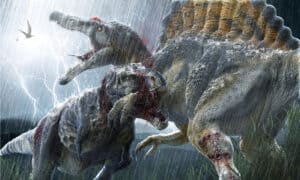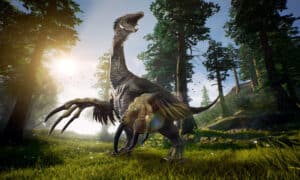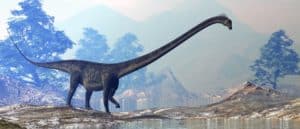When we think of some of the largest land animals around today, we imagine elephants, crocodiles, and even ostriches. However, the ancient world was filled with land animals that were much larger than anything we have around today. That’s why we’re going to discover and examine the largest land animal in history. We’ll show you when it lived, what it was like, and if anything that large is walking around today.
What Are Some of the Largest Land Animals Today?
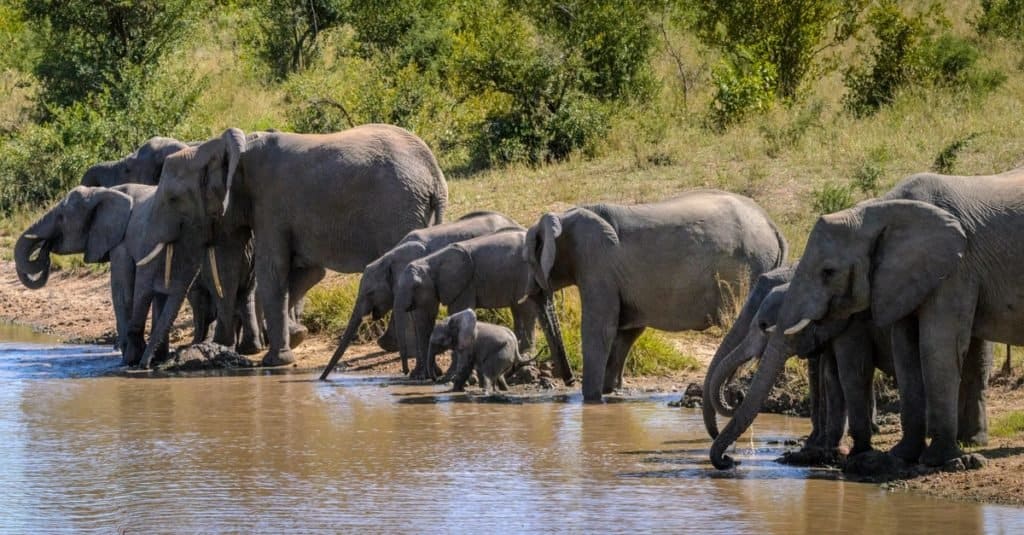
African bush elephants are the largest land animals today.
©Roger de la Harpe/Shutterstock.com
Before we take a trip into the past and discover the largest land animal in history, we should consider the largest animals around today. The largest land animal alive these days is undoubtedly the savanna elephant. This is arguably the largest of all the elephants on Earth, and it measures about 7-10 ft tall at the shoulder and may weigh from 6,000 lbs all the way to 13,000 lbs. These are massive animals that make everything near them look small.
Another large terrestrial animal looks like it crawled out of prehistoric times. The saltwater crocodile can measure between 1,000 and 2,200lbs and have a maximum size length of between 17 ft and 23 ft. Crocodiles and alligators are both very large reptiles, but all types pale in comparison to the saltwater crocodile.
The interesting thing about the present-day animals is that they can’t match the past for size. Imagine the largest elephant and then put it next to a T-rex or many other large dinosaurs. The size comparison isn’t even fair. For example, a T-Rex could weigh up to 15,000lbs, stand 20ft tall, and grow 40ft long.
That’s larger than the biggest animal around today, and T-rex was not a very large dinosaur on the grand scale of things.
Why Dinosaurs Were the Largest Animals in History
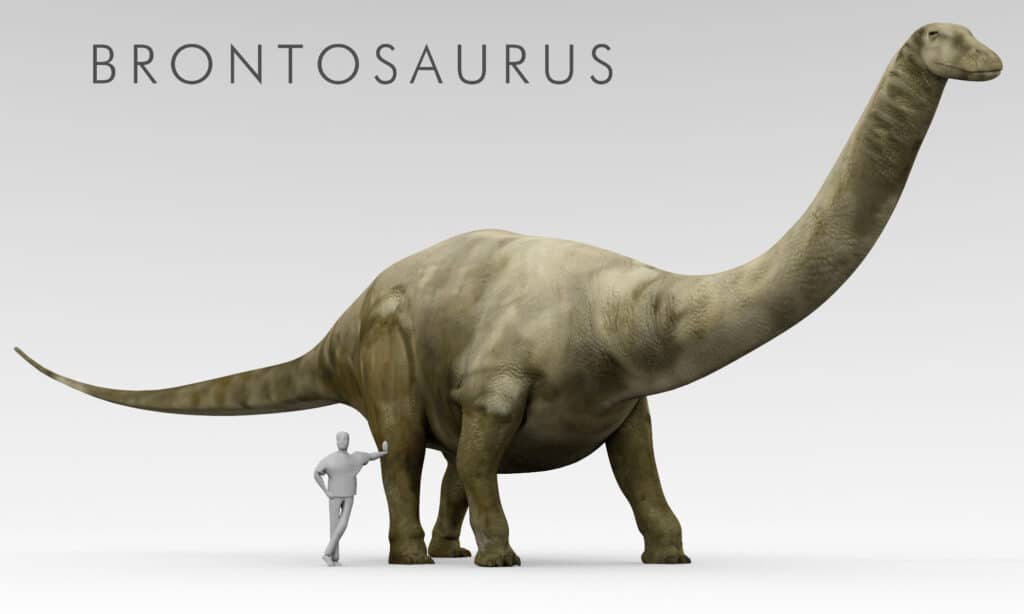
Brontosaurus measured up to 72 feet from the top of their head to the tip of their tail.
©iStock.com/Aunt_Spray
As you may have guessed, the largest land animals in history were dinosaurs. These gigantic reptiles had millions of years to evolve and grow large. Some scientists theorize that the abundant oxygen levels in the atmosphere along with a large, lush environment allowed fauna to get massive.
As a result of these great conditions and the relatively stable environment, dinosaurs could grow 50 feet long overall and weigh 44,000lbs without being the biggest terrestrial creature of all time.
Thus, many of the largest creatures that have ever roamed the planet were dinosaurs. Another interesting fact about these massive reptiles is that the largest, heaviest of all the dinosaurs were not meat-eaters. While many large dinosaurs were carnivorous, the biggest were herbivores.
What Is the Largest Land Animal in History?

Argentinosaurus is believed to measure about 130ft long.
©watthanachai/Shutterstock.com
The largest land animal in history was known as Argentinosaurus. This dinosaur was discovered in Argentina, South America. It’s believed that the dinosaur measured about 130ft long and weighed perhaps 110,000 lbs to 220,000 lbs. However, much of what we know about this dinosaur’s size is based on fragments of its body.
That means we are not entirely sure just how much this creature weighed or how long it could get. Based on the estimates of some experts, though, this was the largest creature that ever walked the planet. Others believe that this dinosaur was too large to adequately function, requiring more food than a slow herbivore would be capable of finding and eating in a day. Such naysayers believe that the dinosaur was much smaller than the hypotheses suggest.
Either way, Argentinosaurus was a gigantic sauropod, possessing a very long neck and a very long, large tail. Moreover, it had four thick legs on which it walked and helped to support its immense weight. Based on the upper limits of its potential weight, we’re going to call this the largest terrestrial creature of all time.
A Modern Challenge to the Largest Terrestrial Creature
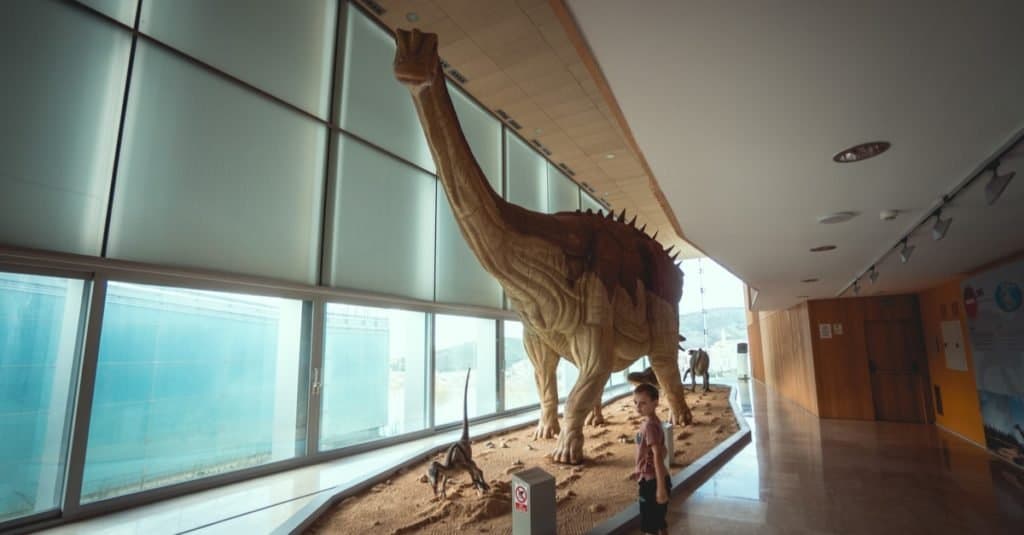
The Titanosaur is estimated to be up to 122ft in length.
©Basilio Dovgun/Shutterstock.com
Another recent challenger to the title of the largest land animal was called Patagotitan mayorum. Its colloquial name is the Titanosaur. The fossils of this dinosaur were found in Argentina, South America much like the Argentinosaurus. However, this dinosaur was announced in 2014 and named in 2017, so it’s a newcomer.
Some estimates about this dinosaur’s size conclude that the creature grew up to 122 ft in length and stood about 40-50 ft tall at the head. Also, original estimates claimed that Titanosaur weighed between 65 tons and 75 tons, or 165,000 lbs!
Scientists believed that the Titanosaur was a massive animal that could not be matched for size by any other dinosaur in the world. However, new estimates were put forth in 2019. These claimed that the Titanosaur only weighed between 42 and 71 tons, with a mean value of 57 tons. That would put its weight at 114,000 lbs, far less than the Argentinosaurus.
Again, it is difficult to pin down the size and weights of these dinosaurs. Aside from extrapolating data based on relatively few bones, scientists also have to consider the upper limit of the dinosaur’s size based on age. For example, the Titanosaur bones were from a young adult dinosaur, so we don’t really know how much more it could have grown. The dinosaur may have reached its optimal size at a young age, too.
What Is the Largest Animal in History?
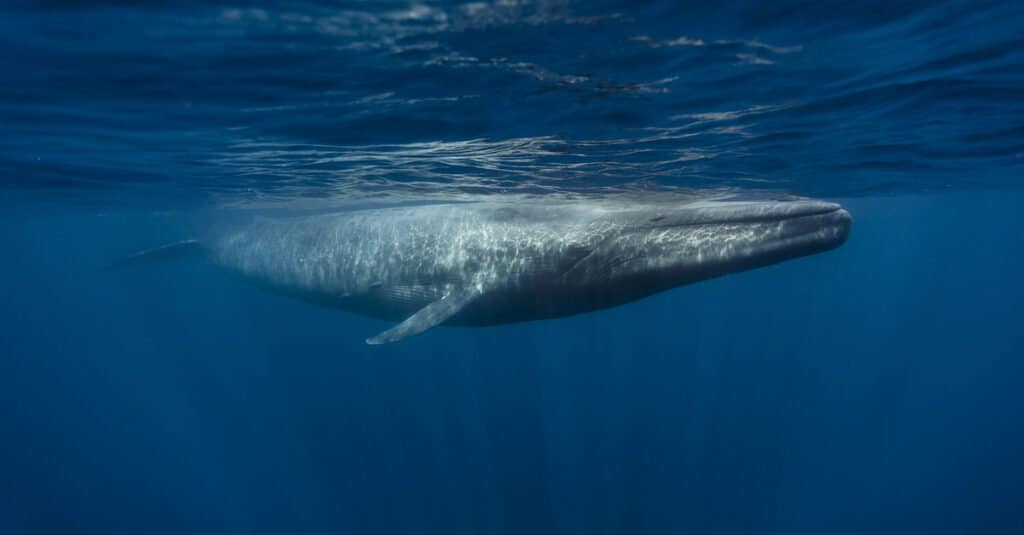
Blue whales are massive creatures that dwarf everything else in the world.
©Andrew Sutton/Shutterstock.com
The largest animal in history is the blue whale. The blue whale weighs between 220,000 and 352,000 lbs, and they can measure as long as 100 ft in total length. Sure, this length is shorter than the dinosaurs, but their weight and bulk are much larger.
This mammal lives in the ocean and eats remarkably small creatures to stay alive. Interestingly, whales solve the two biggest issues faced by herbivorous dinosaurs: supporting their bodies physically and having enough food.
These whales have been able to survive because their bodies are essentially supported by the water. Rather than walking on land, they just swim through the massive open sea. Moreover, they eat several thousand pounds of other sea creatures as they swim. They don’t need to struggle against gravity to reach the highest branches of a tree!
Although many of the terrestrial animals today are smaller than those of the past, we still have what is believed to be the biggest animal of all time. In another way, humanity is lucky that predators weighing tens of thousands of pounds are no longer present. Otherwise, we probably would have been picked off as prey and never lived long enough as a species to reach our current level of development.
The photo featured at the top of this post is © Warpaint/Shutterstock.com
Thank you for reading! Have some feedback for us? Contact the AZ Animals editorial team.



